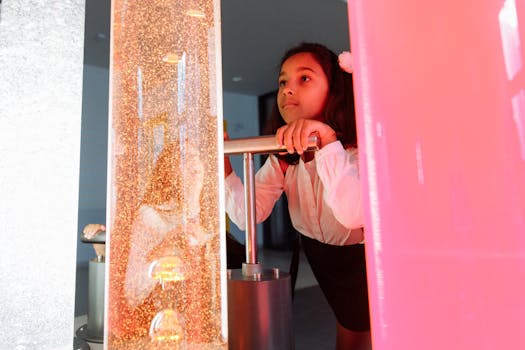
Engaging Minds: The Power of Interactive Science and Technology Displays
Takeaways: Interactive science and technology displays play a crucial role in enhancing educational experiences. They foster engagement, encourage curiosity, and provide hands-on learning opportunities that traditional teaching methods often lack. By integrating technology, these displays make science accessible and fun, inspiring the next generation of innovators and problem solvers.
In today’s fast-paced world, the way we learn and communicate about science and technology is evolving. Interactive displays have emerged as a vital tool in museums, science centers, and educational institutions, creating immersive experiences that captivate audiences of all ages. This article delves into the significance of interactive science and technology displays, their benefits, and how they are shaping the future of education.
The Importance of Interactive Displays in Education

One of the primary benefits of interactive displays is their ability to cater to diverse learning styles. Visual learners, auditory learners, and kinesthetic learners all find value in different aspects of interactive exhibits. For instance, a visitor might learn about physics through a hands-on experiment, while another might engage with digital simulations that illustrate scientific principles. This versatility ensures that everyone can find a way to connect with the material presented.
Moreover, interactive displays encourage curiosity and exploration. When visitors can manipulate objects, conduct experiments, or navigate through digital environments, they become active participants in their learning journey. This engagement not only enhances retention but also inspires a sense of wonder and excitement about science and technology, sparking interest in further exploration and study.
Types of Interactive Science and Technology Displays

- Hands-On Exhibits: These displays allow visitors to physically interact with scientific concepts. For example, a chemistry exhibit might feature a station where visitors can mix different substances to observe reactions.
- Digital Simulations: Utilizing advanced technology, digital simulations enable users to experiment with virtual environments. This could include anything from simulating a rocket launch to exploring the human body through augmented reality.
- Interactive Stations: Often found in science museums, these stations provide visitors with the tools to conduct experiments or engage in challenges. For instance, an engineering station might challenge visitors to build a bridge using specific materials.
- Workshops and Live Demonstrations: Organizing hands-on workshops or live demonstrations where experts explain scientific principles while guiding participants through activities enhances engagement and learning.
Each type of interactive display serves a unique purpose, but they all share the common goal of making science and technology accessible and enjoyable for everyone.
The Future of Interactive Displays in Science Communication

In addition to enhancing visitor experiences, interactive displays also play a crucial role in science communication. They provide a platform for scientists to share their research and discoveries in engaging ways, breaking down complex topics into digestible formats. This is particularly important in an era where misinformation can spread rapidly; interactive displays offer reliable educational resources that promote informed understanding.
Furthermore, as educational institutions adopt more technology-driven approaches, interactive displays will be integral in classrooms and online learning environments. Blending traditional teaching methods with interactive technology can cater to the needs of modern learners, preparing them for a future where science and technology play an increasingly vital role in society.
Conclusion







